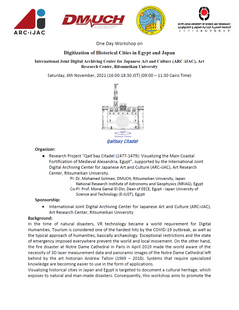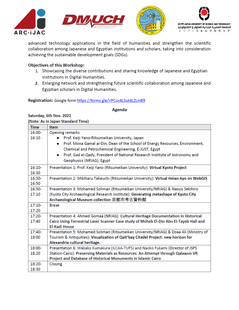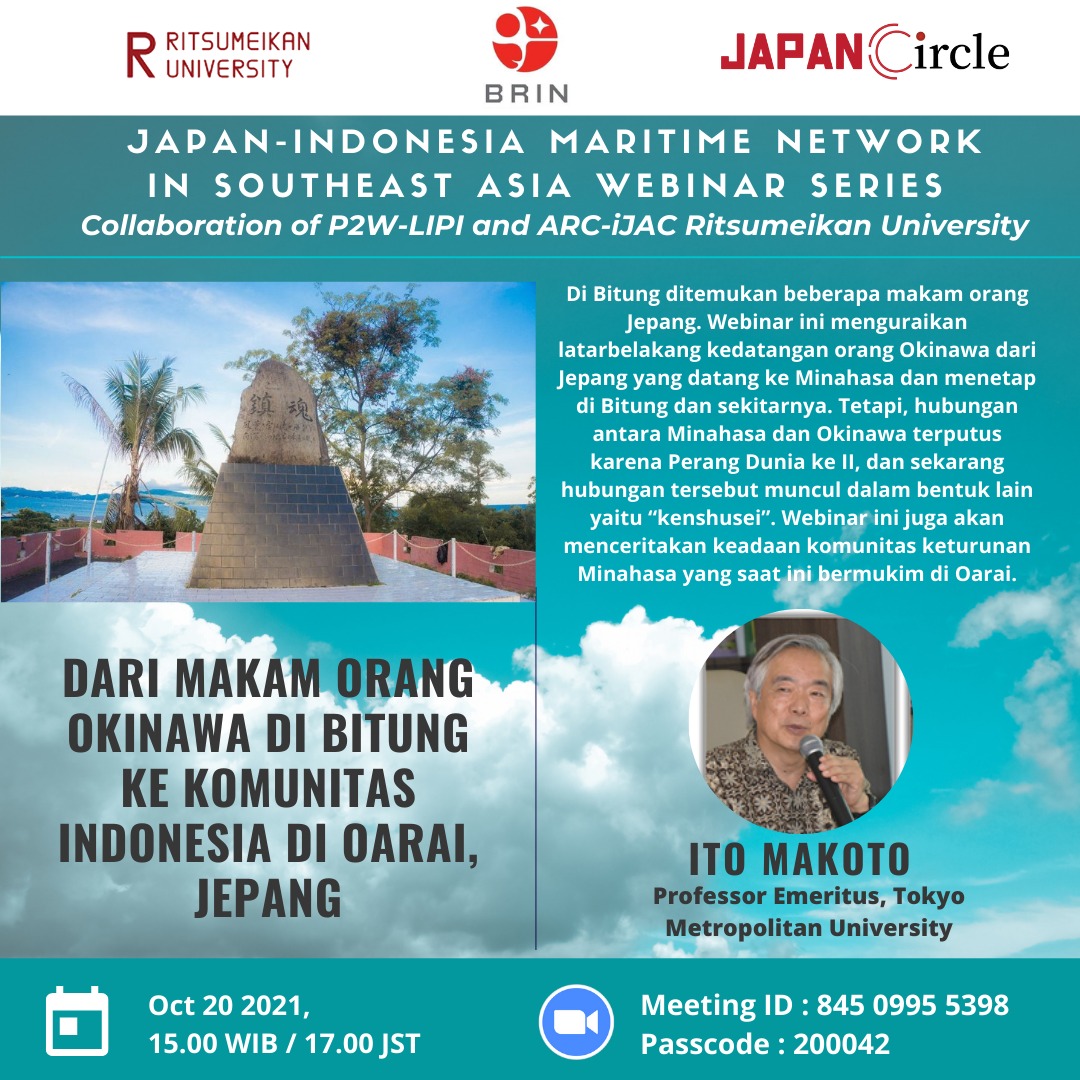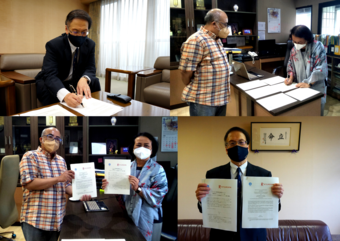-
 16
17
18
19
20
21
22
23
24
25
26
16
17
18
19
20
21
22
23
24
25
26
 [イベント情報]November 16, 2021(Tue)
[イベント情報]November 16, 2021(Tue)The 93rd International ARC Seminar, held on November 10, 2021 is now available on YouTube.
The program was as follows:
Topic: Introducing an album of preliminary drawings by Katsushika Isai (葛飾為斎)
Speaker: Dr. Ellis TINIOS (Honorary Lecturer, University of Leeds, United Kingdom and ARC Visiting Researcher)
We hope you enjoy the video!
[イベント情報]November 10, 2021(Wed)The 93rd International ARC Seminar will be held as a Webinar on Wednesday, November 10, starting at 18:00 JST.
The program is as follows:
Topic: Introducing an album of preliminary drawings by Katsushika Isai (葛飾為斎)
Speaker: Dr. Ellis TINIOS (Honorary Lecturer, University of Leeds, United Kingdom and ARC Visiting Researcher)
Date: Wednesday, November 10, 2021 18:00 - 19:30 JST
Participation: online via Zoom, free of charge (no reservation required)
*This Webinar is open to everyone, and non-ARC members are also invited to participate via YouTube.
The Art Research Center (ARC) is pleased to announce that its academic journal ART RESEARCH vol.22-1 has been released as an e-journal for the first time.
Furthermore, we are accepting manuscripts for our next issue. We are looking forward to your manuscript submission.
Click here for the Call for Manuscript Submissions vol.22-2.
[イベント情報]November 6, 2021(Sat)We kindly invite you to join the one-day workshop Digitization of Historical Cities in Egypt and Japan.
Date: Saturday, November 6, 2021 16:00-18:30 JST (09:00 - 11:30 Cairo Time)
Organizer: Research Project Qait'bay Citadel (1477-1479): Visualizing the Main Coastal Fortification of Medieval Alexandria, Egypt, supported by the International Joint Digital Archiving Center for Japanese Art and Culture (ARC-iJAC), Art Research Center, Ritsumeikan University.
PI: Dr. Mohamed Soliman, DMUCH, Ritsumeikan University, Japan / National Research Institute of Astronomy and Geophysics (NRIAG), Egypt
Co-PI: Prof. Mona Gamal El-Din, Dean of EECE, Egypt - Japan University of Science and Technology (E-JUST), Egypt
Sponsorship: International Joint Digital Archiving Center for Japanese Art and Culture (ARC-iJAC), Art Research Center, Ritsumeikan University
Registration: Via Google Forms https://forms.gle/VPCux4LSutdLZLmB9
Background: In the time of natural disasters, VR technology became a world requirement for Digital Humanities. Tourism is considered one of the hardest hits by the COVID-19 outbreak, as well as the typical approach of humanities, basically archaeology. Exceptional restrictions and the state of emergency imposed everywhere prevent the world and local movement. On the other hand, the fire disaster at Notre Dame Cathedral in Paris in April 2019 made the world aware of the necessity of 3D laser measurement data and panoramic images of the Notre Dame Cathedral left behind by the art historian Andrew Tallon (1969 - 2018). Systems that require specialized knowledge are becoming easier to use in the form of applications.
Visualizing historical cities in Japan and Egypt is targeted to document a cultural heritage, which exposes to natural and man-made disasters. Consequently, this workshop aims to promote the advanced technology applications in the field of humanities and strengthen the scientific collaboration among Japanese and Egyptian institutions and scholars, taking into consideration achieving the sustainable development goals (SDGs).
Objectives of this workshop: (1) Showcasing the diverse contributions and sharing knowledge of Japanese and Egyptian institutions in Digital Humanities. (2) Enlarging network and strengthening future scientific collaboration among Japanese and Egyptian scholars in Digital Humanities.
Agenda
Saturday, November 6, 2021
(Note: As in Japan Standard Time)
Time Item 16:00-
16:10Opening remarks
● Prof. Keiji Yano-Ritsumeikan University, Japan
● Prof. Mona Gamal al-Din, Dean of the School of Energy Resources, Environment, Chemical and Petrochemical Engineering, E-JUST, Egypt
● Prof. Gad el-Qady, President of National Research Institute of Astronomy and Geophysics (NRIAG), Egypt
16:10-
16:30Presentation 1: Prof. Keiji Yano (Ritsumeikan University): Virtual Kyoto Project 16:30-
16:50Presentation 2: Mikiharu Takeuchi (Ritsumeikan University): Virtual Heian-kyo on WebGIS 16:50-
17:10Presentation 3: Mohamed Soliman (Ritsumeikan University/NRIAG) & Naoyo Sekihiro (Kyoto City Archaeological Research Institute): Generating metashape of Kyoto City Archaeological Museum collection 京都市考古資料館 17:10- 17:20 Break 17:20-17:40 Presentation 4: Ahmed Gomaa (NRIAG): Cultural Heritage Documentation in Historical Cairo Using Terrestrial Laser Scanner Case study of Moheb El-Din Abu El-Tayeb Hall and El-Kadi House 17:40-18:00 Presentation 5: Mohamed Soliman (Ritsumeikan University/NRIAG) & Doaa Ali (Ministry of Tourism & Antiquities): Visualization of Qait'bay Citadel Project: new horizon for Alexandria cultural heritage. 18:00-18:20 Presentation 6: Wakako Kumakura (ILCAA-TUFS) and Naoko Fukami (Director of JSPS Station-Cairo): Preserving Materials as Resources: An Attempt through Qalawun VR Project and Database of Historical Monuments in Islamic Cairo 18:20-18:30 Closing [イベント情報]October 22, 2021(Fri)今回は、AIによる翻刻支援と熟練チューターの添削を受けられます!!
立命館大学アート・リサーチセンターでは、文部科学省国際共同利用共同研究拠点の研究支援活動および「国際日本研究」コンソーシアム公募事業の一環として、ARC古典籍ポータル・データベースと翻刻システムを使った古文献の解読講習会・錬成講座、ならびに古文献の解読を目指すプロジェクトの支援を実施しております。
今回募集する第2Phaseでは、個人やグループが、それぞれに翻刻したい作品を選び、個別に翻刻プロジェクトを進めていくことができます。本講座では、AIによる翻刻支援システムが使えるのに加え、熟練の専門チューターが、各プロジェクトの翻刻結果を添削・指導します。
10月22日(金)(午前9:30開始)のキックオフセミナーでは、国際日本文化研究センターの荒木浩先生によるくずし字翻刻にかかわるご講演、国内外から参加する翻刻プロジェクトやチューターの顔合わせ、実施方法の説明を行います。
第1Phaseの説明会に参加できなかった方も、特定のテーマを持った研究プロジェクトとして翻刻を進められる場合、事前の使用方法の説明を受けた上、本講座に参加していただけることが可能です。
いずれも、参加費無料です。奮って、ご応募ください。
Read more>>[イベント情報]October 21, 2021(Thu)Kyoto Shimbun reported on Assistant Professor Hirotaka Sato (College of Letters)--a member of the Art Research Center--who has 'restored' the landscape of Yumiya-cho in the early Meiji era with a digital archive. Yumiya-cho is located in the Higashiyama district of Kyoto.
[イベント情報]October 21, 2021(Thu)On October 21, 2021, the Kyoto Shimbun featured an article on the digital archiving of films that belonged to the late Aimi Akira, initiated by Associate Professor Shinya Saito (College of Image Arts and Sciences)--a member of the Art Research Center.
Professor Saito plans to create a database on these films as part of his project Kyoto Street Culture Archive: Memories of the Pop Culture Featuring the Streets, and their Visualization.
The 4th Japan-Indonesia Maritime Network in Southeast Asia Webinar
※Held in Indonesian.
Jointly hosted by the Research Center for Area Studies, Indonesian Instutite of Sciences (P2W-LIPI) and the International Joint Digital Archiving Center for Japanese Art and Culture (ARC-IJAC) 'Digital Archiving of Indonesian Cultural Heritage and Development of 4D High-Definition Visualization Contents'.
Date: October 20, 2021, 15:00 - 17:00 (Indonesia time) / 17:00 - 19:00 JST
Speaker: Makoto ITO (Emeritus Professor, Tokyo Metropolitan University)
Title: Dari Makam Orang Okinawa Di Bitung Ke Komunitas Indonesia Di Oarai, Jepang.
[イベント情報]October 18, 2021(Mon)The Art Research Center (ARC) is delighted to announce the conclusion of a Memorandum of Understanding (MoU) with the Research Center for Area Studies, Indonesian Institute of Sciences (P2W-LIPI).
A Framework for Collaborative Projects in Digital Humanities
The new MoU builds upon our first MoU signed with LIPI for four years in 2017 and marks a continuation of the successful and fruitful collaboration of both institutions thus far.
The MoU provides a stable framework to advance our collaborative projects in digital humanities, including the research and archival projects on Borobudur Temple, Liyangang site, and Punjulharjo site in Indonesia.
Furthermore, the MoU supports the organization of joint symposia, seminars, and conferences, as well as the exchange of scientists and scientific materials pertaining to our collaborative projects.
Project Spotlight: Digital Archiving of Borobudur Temple, a UNESCO World Heritage
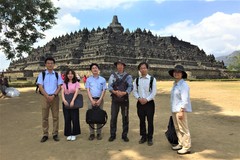 On the ARC side, Professor Satoshi Tanaka (College of Information Science and Engineering) has been leading the digital archiving project of Borobudur Temple that encompasses the ultra-high-quality 3D see-through visualization of this large-scale UNESCO World Heritage Site.
On the ARC side, Professor Satoshi Tanaka (College of Information Science and Engineering) has been leading the digital archiving project of Borobudur Temple that encompasses the ultra-high-quality 3D see-through visualization of this large-scale UNESCO World Heritage Site."Since we are the first foreign scientist team to conduct a 3D scanning of this vast archaeological site, it is a significant international joint research project for the Art Research Center," says Professor Tanaka.
He plans to create a next-generation, ultra-high-definition virtual reality tour of the temple compounds that will be made available on the internet and in local community centers in Indonesia, and a dynamical time-series visualization of the temple's building process.
→ Interview with Professor Satoshi Tanaka on Visualizing Large-Scale Cultural Heritage: https://www.arc.ritsumei.ac.jp/e/news/pc/007293.html
[イベント情報]October 17, 2021(Sun)The crowdfunding initiative of Shochiku Otani Library in Tokyo that Professor Ryo Akama--Deputy Director of the Art Research Center--has been supporting in its digital-archiving activities was featured in the Tokyo Shimbun on October 17, 2021.
The article introduces the 10th anniversary of the crowdfunding initiative that aims at digitizing and making online available severely damaged materials in the library collection.
Nearly half of the donations for the crowdfunding initiative have been made by repeated users, and the number of young users who came to know about the library through crowdfunding has steadily increased.
 16
17
18
19
20
21
22
23
24
25
26
16
17
18
19
20
21
22
23
24
25
26




